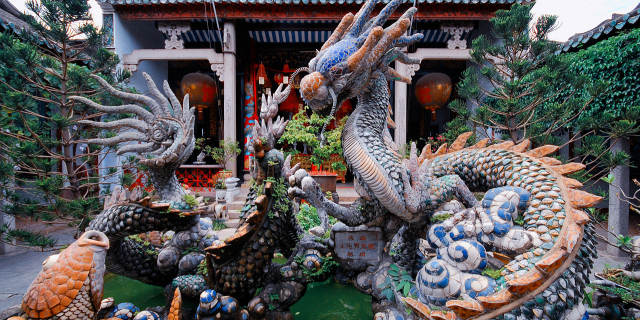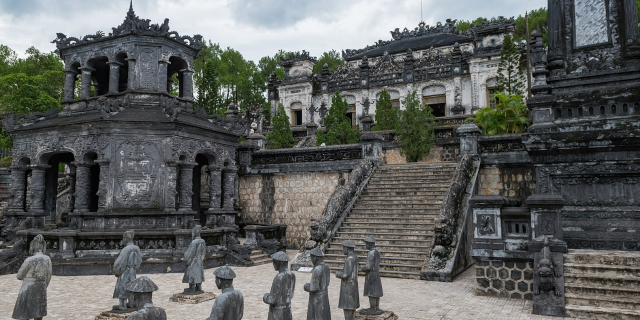Chùa Cầu
( Japanese Bridge )The Japanese Bridge (Vietnamese: Chùa Cầu, lit. Pagoda Bridge) is a footbridge with a temple atop, located in Hội An, Quảng Nam Province, Vietnam. It dates from the late 16th century by Japanese merchantmen but successive renovations and repairs on the bridge have occurred throughout the period to the modern day.
During the 16th century, Japanese merchants began to establish residence in the port city of Faifo (now Hoi An) and established their own enclave. In 1593, one group of merchants began building a covered bridge to cross a neighborhood canal.[1] They finished construction in 1595 and improved access between the Chinese enclave on the other side.[2] In 1653, Japanese residents built a temple atop the bridge as a way to, according to legend, placate the earthquake-inducing monster Namazu.[1][3] With the 17th century withdrawals of Japanese merchants and Dutch East Indies company from Hoi An, Chùa Cầu and its surrounding neighborhood remained relatively preserved.[1]
During a 1719 visit to Hoi An, lord Nguyễn Phúc Chu named the bridge Lai Viễn Kiều, which means "a bridge to welcome guests from afar". According to a date recorded on the roof beam and an inscription left at the bridgehead, the bridge was rebuilt in 1817, though it is not clear if the temple was as well.[3][4] The bridge would be renovated in 1817, 1865, 1915, and 1986, gradually integrating elements of Vietnamese and Chinese architecture and design in lieu of its original Japanese elements.[5]
As the structure is sinking due to underground erosion, there are current plans to prevent its collapse.[4]
























![Jérémie B. - CC BY-SA 4.0 [node:title]](/sites/default/files/styles/640x320/public/pla/images/2021-03/Hang_%C3%89n_Cave_-_201505_-_JB.jpg?h=1c9b88c9&itok=-XbNuGkx)





![Doug Knuth from Woodstock, IL - CC BY-SA 2.0 [node:title]](/sites/default/files/styles/640x320/public/pla/images/2021-03/Son_Doong_Cave_5_0.jpg?h=d2afc48b&itok=J-ENajWM)


Add new comment